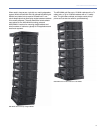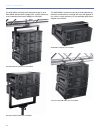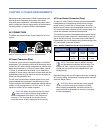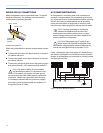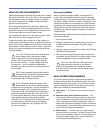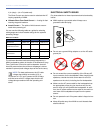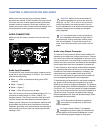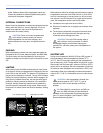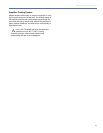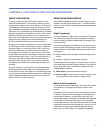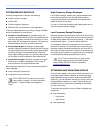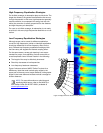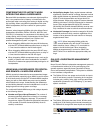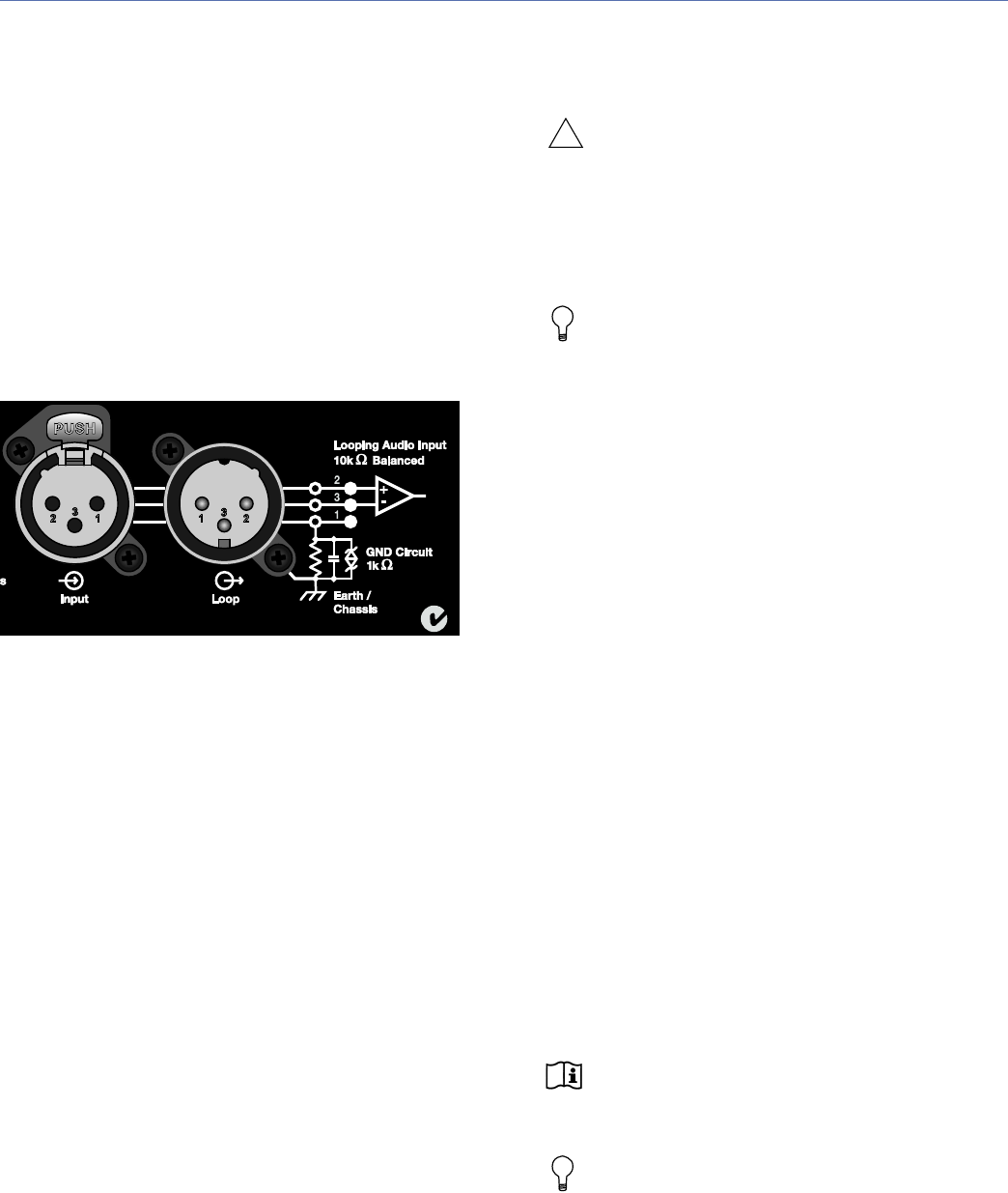
17
CHAPTER 3: AMPLIFICATION AND AUDIO
MINA’s drivers are powered by an extremely efficient
onboard three-channel, Class-D amplifier that uses minimal
AC power when idle. Internal signal processing includes a
complex crossover, frequency and phase correction, and
limiters that prevent driver overexcursion and regulate voice
coil temperatures, ensuring maximum driver lifespan.
AUDIO CONNECTORS
MINA includes XLR audio connectors for Input and Loop
Output.
Audio Input Connector
The female XLR Input connector accepts a balanced audio
signal with an input impedance of 10 kOhm. The connector
uses the following wiring:
■ Pin 1 — 1 kOhm to chassis and earth ground (ESD
clamped)
■ Pin 2 — Signal (+)
■ Pin 3 — Signal (–)
■ Case — Earth (AC) ground and chassis
Pins 2 and 3 carry the input as a differential signal. Pin 1 is
connected to earth through a 1 kOhm, 1000 pF, 15 V
clamped network. This circuitry provides virtual ground lift
for audio frequencies while allowing unwanted signals to
bleed to ground. Make sure to use standard, balanced XLR
audio cables with all three pins connected on both ends.
Telescopic grounding is not recommended, and shorting an
input connector pin to the case may cause a ground loop,
resulting in hum.
CAUTION: Make sure that audio cables for
MINA loudspeakers in an array are wired cor-
rectly (Pin 1 to Pin 1, Pin 2 to Pin 2, and so forth) to
prevent the polarity from being reversed. If one or
more loudspeakers in an array have reversed polarity,
frequency response and coverage can be signifi-
cantly degraded.
TIP: If unwanted noise or hiss is produced by
the loudspeaker, disconnect its input cable. If
the noise stops, there is most likely nothing wrong
with the loudspeaker. To locate the source of the
noise, check the audio cable, source audio, and AC
power.
Audio Loop Output Connector
The male XLR Loop connector allows multiple MINA loud-
speakers to be looped from a single audio source. Connect
the Loop Output of the first loudspeaker to the Input of the
second, and so forth. The Loop Output connector is wired in
parallel to the Input connector and transmits the unbuffered
source signal even when the loudspeaker is powered off.
To avoid distortion when looping multiple MINA loudspeak-
ers, make sure the source device can drive the total load
impedance of the looped loudspeakers. In addition, the
source device must be capable of delivering 20 dBV
(10 V rms into 600 ohms) to yield the maximum peak SPL
over the operating bandwidth of the loudspeaker.
To calculate the load impedance for the looped loudspeak-
ers, divide 10 kOhms (the input impedance for a single
MINA) by the number of looped loudspeakers. For example,
the load impedance for 10 MINA loudspeakers is 1000 ohms
(10 kOhms / 10). To drive this number of looped loudspeak-
ers, the source device should have an output impedance of
100 ohms or less. This same rule applies when looping
MINA loudspeakers with other self-powered Meyer Sound
loudspeakers and subwoofers.
NOTE: Most source devices are capable of
driving loads no smaller than 10 times their
output impedance.
TIP: Meyer Sound’s Galileo™ loudspeaker
management system is highly recommended for
driving systems with multiple loudspeakers. In addi-
tion to maintaining signal integrity for long cable
Audio Input and Loop Output Connectors
!



